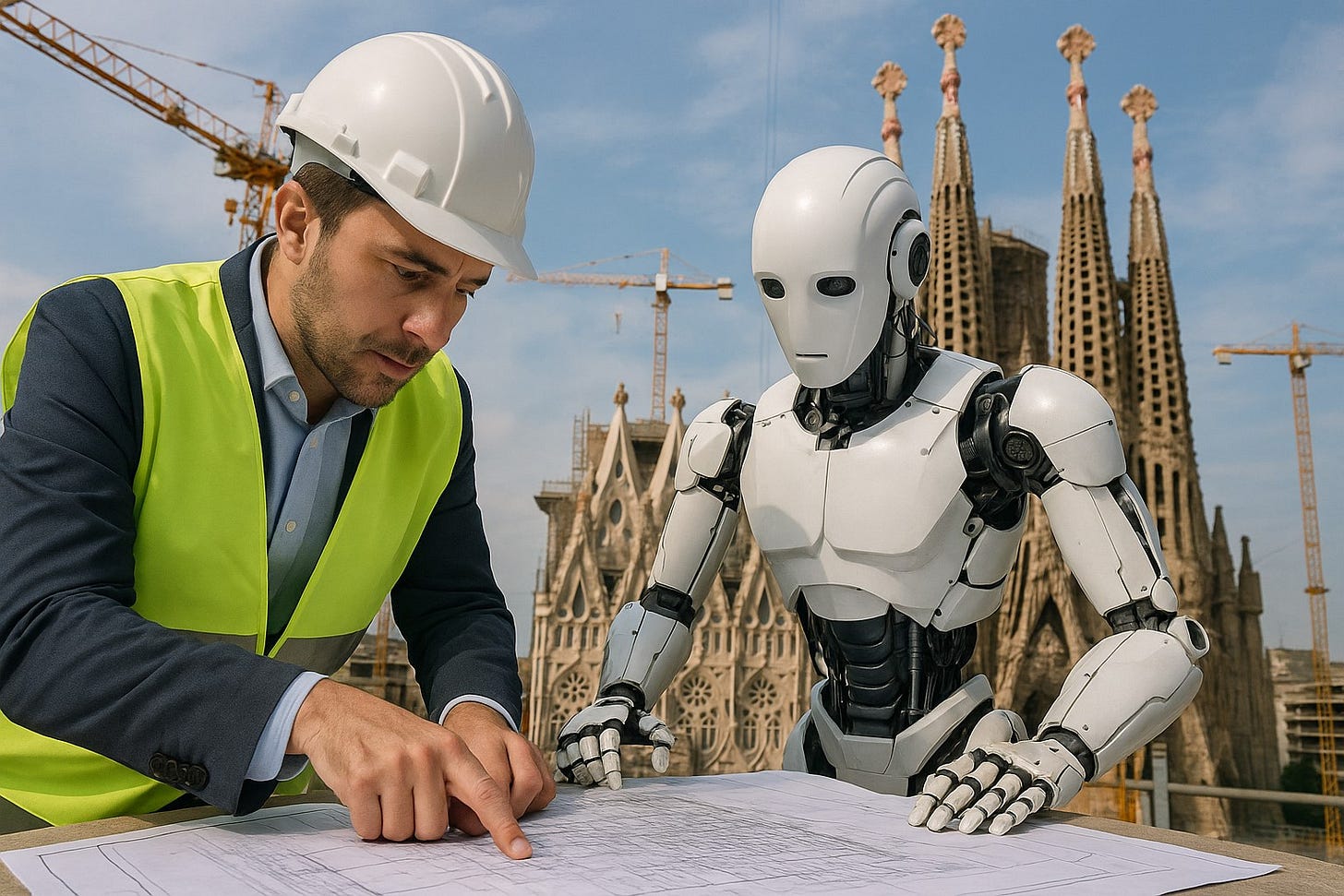🏗️ Smart Architecture: AI Doesn't Build, It Frees
🧠 AI doesn't replace talent; it enhances it. It frees architects and builders from repetitive tasks, reclaiming what no machine can replicate: human creativity, judgment, and emotion.
This article from Transparent Algorithm #88 is also available in Spanish, Catalan, French, and Italian.
Artificial intelligence has not arrived to replace architects or builders. Rather, it has come to reaffirm precisely what makes the profession unique: creativity, intuition, and critical judgment—qualities no machine can replicate. The real challenge of AI in architecture isn't technical but philosophical: how can we harness its potential without losing human control over the creation of our living spaces?
For professionals in architecture and construction, artificial intelligence is already an indispensable ally taking over repetitive, monotonous, and mechanical tasks. For example, AI assists in structural calculations of large-scale buildings like the Sagrada Familia or real-time monitoring of energy performance in sustainable housing in Barcelona’s Marina del Prat Vermell neighborhood. AI optimizes technical aspects down to the millimeter, tasks which previously consumed too much of architects' time, thus freeing them for work that adds genuine human value.
Additionally, AI plays a fundamental role in logistics management, resource planning, and cost control, reducing human errors during construction and renovation phases. In rehabilitation projects in Barcelona's Eixample district or in restoring traditional Catalan farmhouses, intelligent systems can precisely forecast timelines and costs, preventing unpleasant surprises during construction.
On the bureaucratic and administrative front, AI promises to revolutionize document management, paperwork, and regulatory compliance. Automated processing of applications, licenses, urban planning permits, and energy certifications could save countless hours currently spent on tasks offering little value to the creative or technical process. Nevertheless, accurately and fairly interpreting complex regulations or negotiating with public administrations will still require the judgment and responsibility of experienced professionals.
The Escola Sert, the educational center of the Architects’ Association of Catalonia (COAC), has published content exploring how AI can optimize processes like architectural rendering and blueprint generation, highlighting its potential to save time on repetitive tasks and allow professionals to focus on the more creative aspects of design.
Technological advances inevitably prompt reflection on which job profiles may disappear in coming years. Tasks in drafting, basic structural calculation, or administrative site control could be partially automated, endangering certain repetitive roles. Conversely, new highly specialized roles will emerge, such as managers and supervisors of intelligent technologies, experts in AI-applied sustainability, or strategic managers for integrated projects capable of leading interdisciplinary teams composed of humans and machines.
But let’s not fool ourselves: no algorithm will ever replace the human capacity to interpret the cultural, social, and historical context of a place. The architect’s sensitivity remains irreplaceable in creating spaces that evoke emotions and experiences, as seen in the exquisite Mediterranean minimalism of projects like Casa Gomis in El Prat de Llobregat or the poetic landscape integration of the anticipated Túnel de Glòries.
The true impact of artificial intelligence on architecture and construction is not a threat but an extraordinary opportunity. If we can put technology at the service of human talent, Catalan and Spanish architecture have a bright and promising future ahead.
"Smart Architecture: How AI Enhances Human Value in Construction," published in Construnews.


